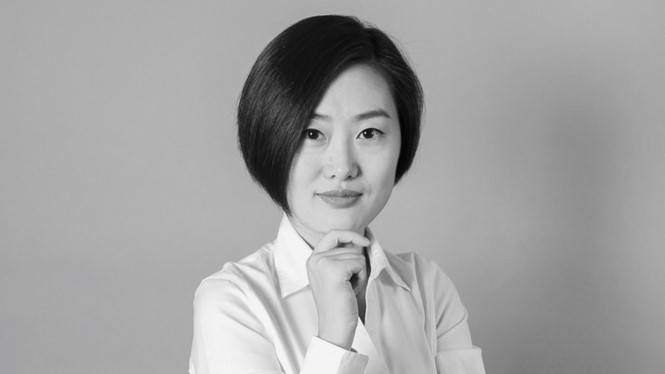Insights: Chinese brands’ naming strategies in globalisation

The 2018 Transform Awards Asia-Pacific celebrates excellence in rebranding and brand development. Lab Brand was one of the winners
It took 100,000 years for human society to develop from the hunting era to the agricultural era, but only several thousand years from the agricultural era to the industrial era and 200 years from the industrial era to the atomic age. The atomic age to information age? Only several decades.
This description is also applicable to the development of China’s economy and Chinese brands. In the past half century, China’s economy achieved an incredible growth. From 1952 to 1970, China’s GDP increased by three times, from 1970 to 1990 by 8 times and from 1990 to 2010 by 22 times.
Meanwhile, some Chinese brands have started to take important shares in global market. Chinese brands are starting to appear in the Best Global Brand billboard. How to build an effective global brand has become an important topic. Naming is the first step of brand building. As Chinese consumers, we feel it’s normal that foreign brands create Chinese names. When Chinese brands go abroad, what’s a good naming strategy?
Many Chinese brands favour acronyms, which come from a phrase or sentence. It is a common type of alphabetic name used in the global market. The most well-known acronym brand is IBM, which stands for International Business Machines. Chinese acronym brands include TCL, ZTE, DJI, BYD and dozens more. TCL originally stood for Telephone Communication Limited. But nowadays, people also interpret it as Today China Lion. ZTE stands for Zhongxing Telecommunication Equipment. DJI is the acronym of Da Jiang Innovation. BYD stands for Build Your Dream.
In most cases, acronyms carry no meaning by themselves. They have an advantage in being short and easy for communication. But an acronym often lacks distinct brand attributes and messages. Therefore, acronyms feel rational and technical, but without emotion – a code. This explains why tech and auto brands tend to use acronyms. Since they cannot bring out emotional messages, brands sometimes leverage product names to build the necessary emotional connection with consumers. The product names under DJI are often meaningful words such as Phantom, Zenmuse, Matrice, which conveys product features such as flexible, intelligent, broad view. The meaningful product names are good complements to the more abstract acronyms. Together they form an effective nomenclature.
Pinyin was introduced and implemented in 1950s. The Pinyin system contributes greatly to the popularization and, to an extent, the globalisation the Mandarin and Chinese languages. Many Chinese brands use Pinyin names for the global market including: Huawei, Haier, Moutai and Baidu. These names are simple and more importantly, easy for foreigners to pronounce. Therefore, they are well accepted in the global market. But not every Pinyin name is suitable to be a brand name. Pinyin of Lenovo’s Chinese name is Lianxiang. Compared to Lenovo, Lianxiang is much more difficult for foreign consumers to read. As the syllables do not follow the western language habit, foreigners are likely to read it as “Li’An’Xi’Ang”.
For Chinese consumers, Pinyin is equivalent to the written Chinese name, which in itself carries meaning. But in the eyes of foreign consumers, Pinyin does not inherently carry the meaning of the words it is meant to represent. In fact, most of time, Pinyin carries no meaning in the context of foreign language. For example, foreign consumers do not understand Huawei as 'China, great achievement.' In some cases, Pinyin names can be accidentally deonte negative connotations. Hongqi is pronounced as 'Honky' in English, which is a disparaging term with racial undertones.
The advantage of Pinyin name is the ability to preserve the pronunciation of the original Chinese name. Pinyin also conveys a strong sense of Chinese culture. It is a good naming strategy for brands that want to emphasize or promote Chinese culture. Even some international brands adapt such a strategy. For example, Hermes Group launched Shangxia (meaning 'up and down'), a luxury lifestyle brand rooted in Chinese craftsmanship and rejuvenated traditional culture. LVMH launched Chaling (meaning 'tea spirit/soul'), a high-end skincare brand featuring the essence of Pu’er tea.
A Pinyin name has the potential to represent a brand well in global market. The key is to make sure the pronunciation fits the foreign language habit and the meaning or connotation fits the brand tonality.
In recent years, many nascent Chinese brands aim to target international market. They tend to carefully design their brand names to show an international image in the global market. Vivo and Oppo, for example, two Chinese smart phone brands, are popular in southeast Asia. Their brand names read as smooth, rhythmic and loud. Even Chinese consumers can pronounce them easily. Therefore, they are confident to apply the alphabetic name both at home and abroad. New energy cars is an emerging industry in which there is heavy Chinese capital and investments. NIO was set up in 2014 and has just announced its first mass production model ES8 in early 2018. The original alphabetic name chosen for the brand was Nextev, coming from 'next generation electric vehicle'. Later, the brand decided to change it to NIO, which is generic in reflecting the 'new/neo' concept and corresponds well to the future connotation of its Chinese name.
For Chinese brands, creating an authentic alphabetic word as brand name requires great effort and attention. Lack of understanding of foreign language, culture and branding mindset may lead to some questionable names. Shenzhen Ganten (Jingtian) Group launched a premium mineral water brand Blairquhan in 2017, aiming at competing with international peers such as Evian and Perrier. Blairquhan is the name of an ancient castle situated in Scotland. The group intends to convey a sense of nobleness with this name. But Blairquhan is a quite long word composed of two very different parts: blair is a common English word, a male name. Quhan, however, looks like a Pinyin which refers to the notion of removing sweat or coldness. The complexity and lack of harmony in this case can cause difficulty in communication.
Brand should think carefully about the meaning or connotation of the word to be used as brand name. It should convey the brand’s intended message or image. For global consumers, a word coming from or rooted in their language and culture will allow them to more easily build an emotional connection with the brand. Qinyuan is the leading brand in water purifiers and drinking water equipment in China. Recently it changed its name from Pinyin Qinyuan into an invented word Truliva, expressing 'true' and 'life.' For the global market, Truliva is easy to read and carries positive meaning, which is in line with the water purifying expert image of the brand. It is more effective in helping the brand communicate among oversea consumers.
Today we live in a brand-crowded world. It is challenging for Chinese brands to rise in the global market. Choosing a proper alphabetic name is a start. More efforts need to be made in deeply understanding glocal culture and consumers, identifying the trend, holding a vision and creating differentiating products and services. Continuous brand building will help Chinese brands achieve success in global market.
Amanda Liu is the creative director at Lab Brand












